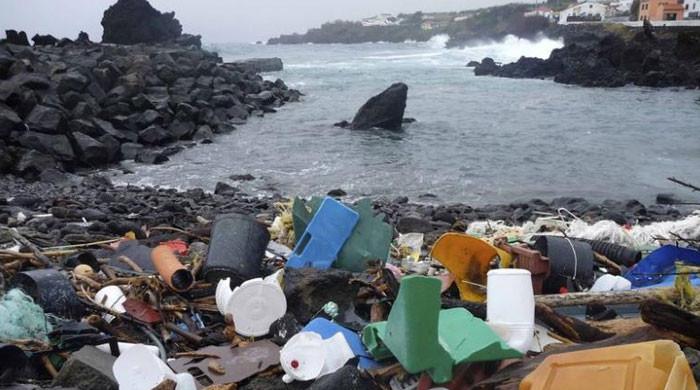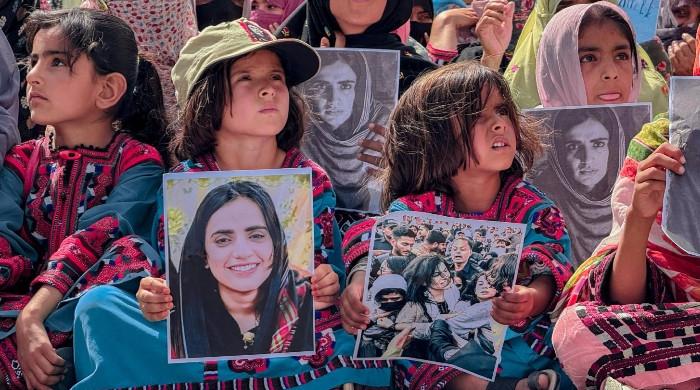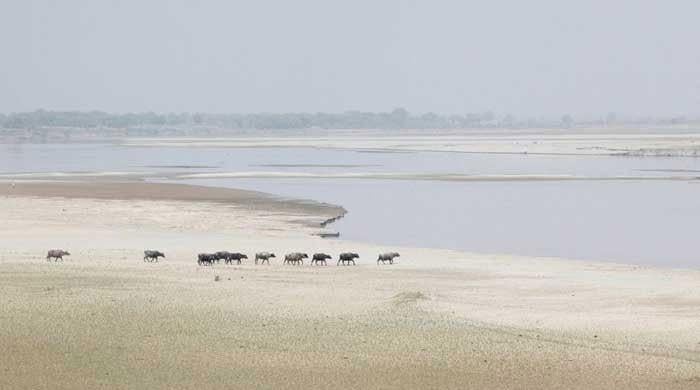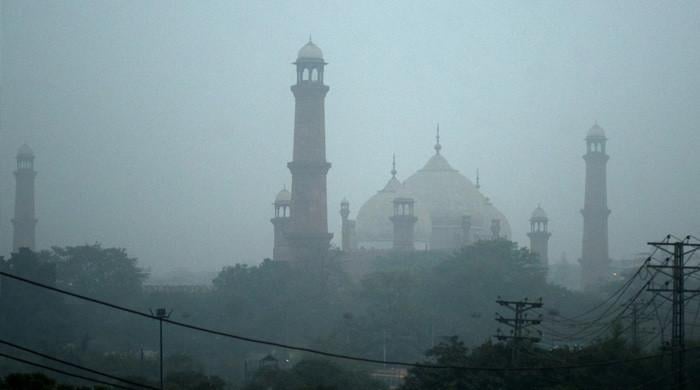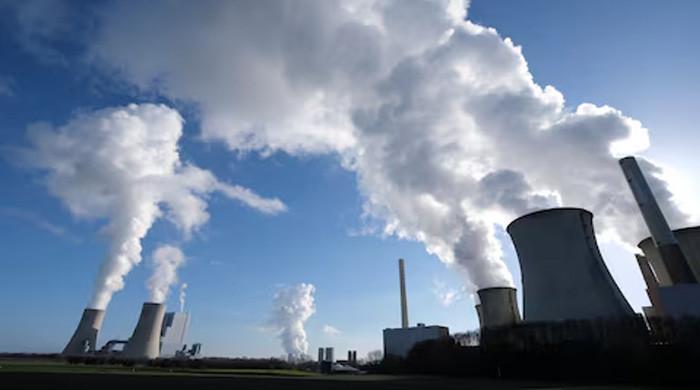Pakistan's carbon trade test
As per WB's CBAM Exposure Index, Pakistan’s exposure is significant especially when benchmarked against major exporters like India, China
May 01, 2024
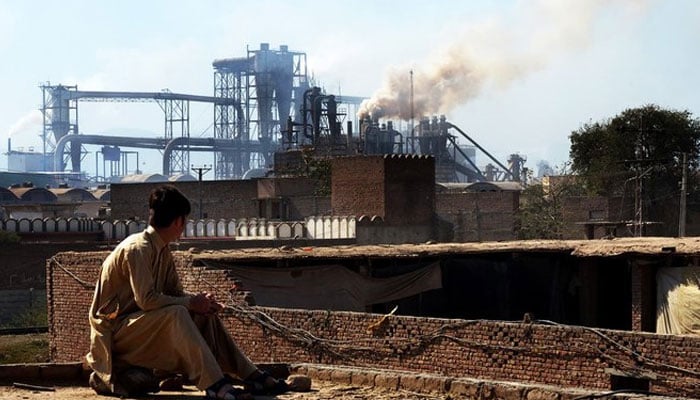
The European Union’s Carbon Border Adjustment Mechanism (CBAM) is poised to reshape its international trade dynamics by introducing a carbon price on imports of specific goods.
This measure is designed to ensure that foreign producers and EU producers face the same carbon costs, thereby preventing "carbon leakage". This term refers to a scenario where production might relocate to countries with less stringent emission regulations to evade strict EU rules. Commencing from October 17, 2023, exporters of iron and steel, aluminium, electricity, fertilisers, cement, and hydrogen to the EU must provide a carbon emission disclosure at each stage of the supply chain.
By the year 2026, the CBAM will be fully integrated with the European Union’s Emissions Trading System (ETS). The ETS is a cap-and-trade system that limits the total amount of emissions from high-emitting industries and allows companies to purchase or sell permits as needed. This integration implies that importers who bring in products with emissions higher than the prescribed limit will need to purchase CBAM certificates that replicate the weekly ETS allowance prices. This will effectively align the carbon costs of domestic and imported goods. This alignment compels exporters, including those from non-EU countries, to enhance their carbon efficiency or face higher costs.
Despite only 1.23% of Pakistan’s exports currently being at risk under CBAM, the potential inclusion of textiles — critical to Pakistan’s export economy — calls for pre-emptive strategic policy measures to preserve market competitiveness in Europe, a market that Pakistan has traditionally relied on. As per the World Bank’s CBAM Exposure Index, Pakistan’s exposure, while moderate, is significant, especially when benchmarked against major exporters like India and China.
The CBAM’s influence is not confined to the EU. It has sparked a global movement towards carbon pricing, with numerous countries adopting measures to price carbon. For instance, Indonesia has launched its first carbon market and an emissions-trading scheme, demonstrating its environmental ambitions despite being the world’s ninth-largest polluter. Likewise, Japan and Vietnam are in the process of establishing their carbon markets, indicating a shift towards more rigorous environmental policies. China, too, has expanded its emissions-trading scheme, now covering the intensity and total emissions of coal power plants, promoting a transition to renewable energy and environmental rehabilitation. In the US, there is a growing requirement for companies and businesses to disclose their carbon emissions.
For Pakistani exporters, the global shift towards carbon pricing implies a forthcoming need to reduce emissions or incur offset costs. An effective first step is the establishment of tailored industry-specific Monitoring, Reporting and Verification (MRV) protocols. These protocols, crucial for the credibility of emission reports, vary by industry and can incorporate metrics like energy efficiency, green transportation, nature-based solutions, and green supply chains.
However, complexity arises not just from measurement and reporting but also from the certification of emission reductions.
Many would know the CDM (clean development mechanism). It was a mechanism established under the Kyoto Protocol to combat climate change. It allowed developed countries to invest in emission reduction projects in developing nations to meet their emission reduction targets. Although it no longer accepts new projects, its methodologies and tools are still used in other carbon standards.
Some of the new certification standards include the Gold Standard, The VCS (Verified Carbon Standard), Verra, SD Vista, GCC (Global Carbon Council), Puro Standard and CERCARBONO, etc.
The Gold Standard emphasises environmental integrity, sustainable development and stakeholder consultation, focusing on projects like renewable energy and waste management. Verra’s VCS is the most widely utilised for certifying carbon credits, ensuring that projects not only reduce emissions but also benefit local communities and economic development.
SD Vista also targets sustainable development and emission reductions, offering detailed guidance for projects ranging from sustainable agriculture to renewable energy. GCC, a newer standard from the Middle East and North Africa, is still establishing its presence in the carbon market, with its long-term impact yet to be determined.
The ones that verify compliance with the above standards are, in turn, required to be ISO (International Standardisation Organisation) 14065:2020 certified. This standard is crucial in validating and verifying greenhouse gas emissions reductions. It ensures that these verification bodies assessing carbon projects adhere to principles of impartiality, ethical conduct, fair presentation, and due professional care.
In the absence of an ISO 14065:2020 certified verification body or reliable intermediaries who may facilitate certification from such a verification body, the cost and time of compliance for Pakistan to CBAM and other ETS will increase manifolds.
In response, initiatives to reduce carbon emissions, a National Carbon Pricing Policy, and a carbon tax emerge as strategic necessities. The latter would mirror EU emission fees, facilitating Pakistani exporters’ compliance with CBAM regulations. A concerted effort involving government, industry, and academic stakeholders is vital for ensuring that such a pricing mechanism aligns with Pakistan’s national interests and its global climate commitments.
Energy reforms offer significant emissions reduction prospects. Initiatives like Competitive-Trading-Bilateral-Contracts-Markets (transitioning from a single-buyer electricity market to a competitive wholesale market) and Power Wheel Policies could allow industries to source cleaner electricity, reducing dependence on the predominantly fossil-fuel-based power grid. However, among others, it would necessitate the government not to introduce any policy that may discourage using renewable energy, including the proposed amendments in the net-metering policy that may discourage the use of solar power.
Agriculture — a cornerstone of Pakistan’s economy — also requires transformative approaches to remain competitive in future export regimes. Implementing techniques like alternate wetting and drying in rice cultivation could curb methane emissions by up to 30%, align Pakistan with international best practices in sustainable agriculture, and help it meet its methane emission reduction pledge.
Public awareness initiatives are equally crucial. By educating the industry and the broader public about the implications of the CBAM and the advantages of low-carbon operations, these campaigns can build a foundation of support for the transformative changes required, accelerating the adoption of sustainable practices across diverse sectors.
Additionally, a comprehensive monitoring and evaluation framework is indispensable for ensuring the effectiveness of these initiatives. Standardising data collection and emissions calculation procedures would enhance transparency and accountability, facilitating a credible transition to a low-carbon economy.
Another important factor is the speed at which Pakistan can establish indigenous intermediary bodies to connect its green initiatives with global carbon credit verification entities.
Lastly, effective interministerial coordination and a shared vision of the federal government and the federating unit on this issue are vital. The creation of local and regional carbon markets will encourage companies to reduce their emissions, benefiting the economy and the environment.
These markets would allow for the trading of carbon credits, bringing in foreign exchange through selling these credits, promoting the alignment of economic activities with sustainability goals, and helping Pakistani exporters comply with CBAM requirements. As discussions on carbon markets continue between the federal government and federating units, it is important to consider compliance with CBAM as well.
Likewise, the ministries of climate change, commerce, and industries need to work together to develop sector-specific greenhouse gas inventories and targeted mitigation strategies, seamlessly integrating climate considerations into national trade policies.
Pakistan’s proactive engagement with the CBAM, by reducing carbon emissions and bolstering its carbon pricing and market mechanisms, ensures its transition to a low-carbon economy. It will also ensure that its industries remain competitive, sustainable, and compliant with international environmental standards. It is about time we took a whole-of-government, whole-of-policy approach to the opportunities and to tackling the challenges posed by climate change.
The writer heads the Sustainable Development Policy Institute. He posts on X @abidsuleri
Disclaimer: The viewpoints expressed in this piece are the writer's own and don't necessarily reflect Geo.tv's editorial policy.
Originally published in The News





